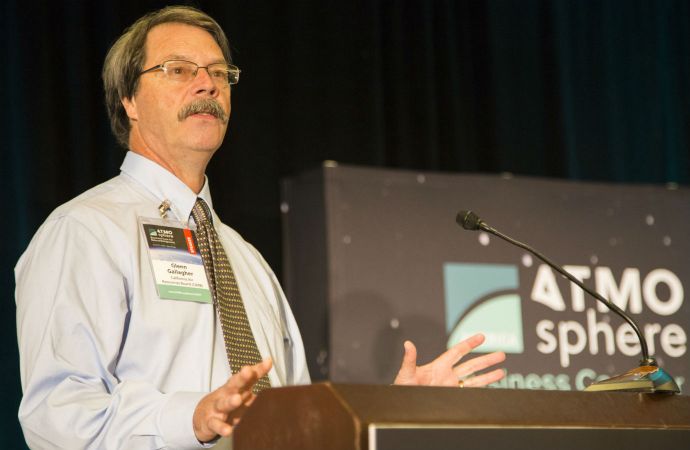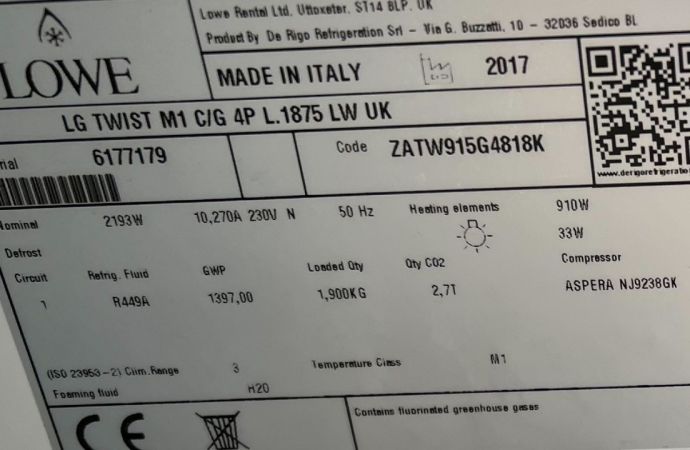The California Air Resources Board (CARB) called on ATMOsphere America attendees for hard data on how to reduce HFC emissions by 40% below 2013 levels by 2030.

Glenn Gallagher, air pollution specialist at the California Air Resources Board (ARB), speaking at the CARB SLCP discussion event during ATMOsphere America 2017, San Diego, Calif.
California’s SLCP (short-lived climate pollutant) emissions reduction plan obliges the state to reduce HFC emissions by 40% below 2013 levels by 2030. “We really need your feedback,” Glenn Gallagher, air pollution specialist at the California Air Resources Board (ARB), implored the ATMOsphere America audience gathered in San Diego, Calif.
Currently, California’s SLCP strategy contains a ban on refrigerants with a GWP of 150 or above in new commercial and residential refrigeration equipment; a ban on refrigerants with a GWP of 750 or more in stationary air conditioning; and a ban on sales of refrigerants with a GWP greater than 2,500, to be followed in a few years by a ban on refrigerants with a GWP greater than 1,500.
The SLCP strategy was approved in the spring, but it is not yet a regulation [...] It’s a roadmap of proposals to address HFC emissions.”
– Glenn Gallagher, ARB
“The SLCP strategy was approved in the spring, but it is not yet a regulation,” stressed Gallagher. “It’s a roadmap of proposals to address HFC emissions.”
Gallagher noted that the ARB still has “a lot of data gaps,” including information on the cost and energy consumption of alternative refrigerant-based HVAC&R equipment.
He hoped those gathered for the workshop could fill in some of the data gaps. “Your issues and concerns are welcome. Feel free to request a one-on-one talk with ARB,” he said.
During the session, attendees responded electronically via the ATMO America 2017 conference app.
Participants responded to the following questions:
- “Should CARB pursue its own HFC reduction plan in addition to what is being done by the EPA and the Kigali amendment? (62% said yes; 31% said yes if not too costly.)
- "Is the 150 GWP maximum for refrigeration systems too high? (41% said yes; 38% said it depends; 13% said it’s too low; 11% said it’s about right).
- “Should equipment with under 50 lbs. of refrigerant be exempt from the regulations? (70% said no.)
Related stories



